Phuong Nam Truc Lam Zen Monastery

Truc Lam Phuong Nam Zen Monastery stands out as a significant spiritual site and a popular destination for tourists exploring Can Tho. Situated in Nhon My hamlet, My Khanh commune, Phong Dien district, this monastery, located approximately 15km from the city center, attracts many visitors. Following a visit to this attraction, tourists often extend their exploration to nearby places such as My Khanh Tourist Garden, just 1km away. Additionally, there are opportunities to explore other renowned sites like Tay Do Night Market and Can Tho Noodle House.
Although the construction commenced in July 2013, it wasn't until May 2015 that Truc Lam Phuong Nam Zen Monastery was officially opened to the public. With a vast expanse exceeding 38 thousand square meters, it is recognized as the largest Buddhist structure in the Southwest. Many observers have noted the pagoda's architectural elements, reflecting a distinct Vietnamese style reminiscent of the Ly - Tran dynasties. This unique characteristic sets it apart from Khmer Theravada and Northern Buddhism temples in the Southwest region, making it easily distinguishable.
Truc Lam Phuong Nam Zen Monastery, affiliated with the Truc Lam Yen Tu sect, traces its spiritual lineage to Buddha Emperor Tran Nhan Tong. Emperor Tran Nhan Tong played a pivotal role in leading the people's resistance against the Mongol-Yuan invaders. After achieving peace in the country, he abdicated the throne in favor of his son and embarked on a solitary journey to Yen Tu mountain for spiritual practice. There, he founded the Truc Lam Yen Tu Zen sect, fostering a shared ideology and a sense of unity among the people.
Within the Zen Monastery's grounds, various sections contribute to its comprehensive facilities, including a Lecture Hall, Guest Hall, Library, and Oriental Medicine Room. With a rich history and profound spiritual significance, Truc Lam Phuong Nam Zen Monastery stands out as one of the most distinctive architectural masterpieces in the heart of the Mekong Delta. This site holds immense cultural value, representing a place of great spiritual and cultural significance.
Triple gate area and outside yard
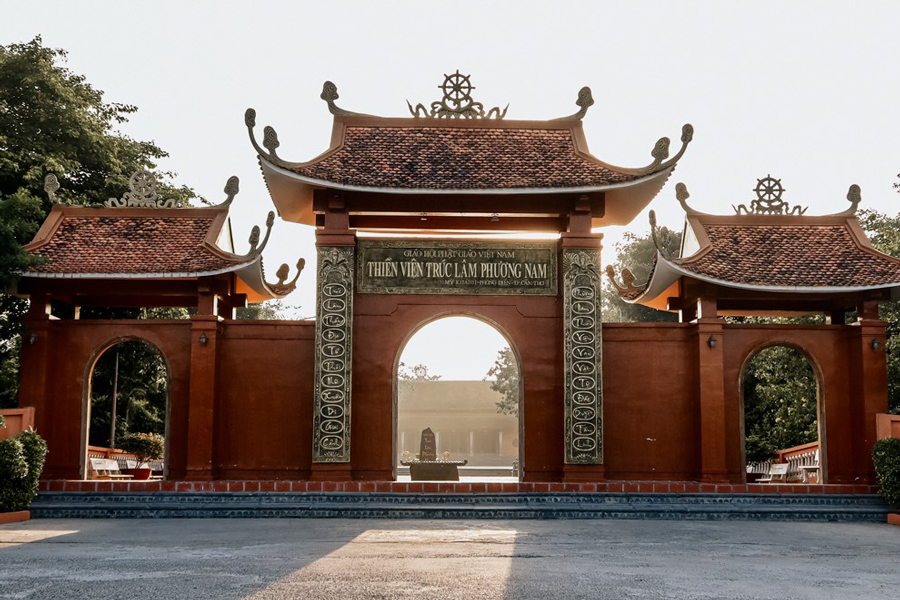
The triple gate of Phuong Nam Truc Lam Zen Monastery
Truc Lam Phuong Nam Zen Monastery features a distinctive triple gate, crafted with reinforced concrete mimicking wood. The gate includes a central aisle and two symmetrical aisles, topped by a boat-shaped roof adorned with impressive dragon claws, red fish fin tiles, and a symbolic depiction of two dragons flanking the Dharma wheel. This architectural masterpiece adds visual grandeur and cultural significance to the monastery. Going straight through the three-entrance gate, visitors will reach the main courtyard, impressive with 18 statues of "Ten Eight Arhats" carved in stone on both left and right sides.
Main hall area
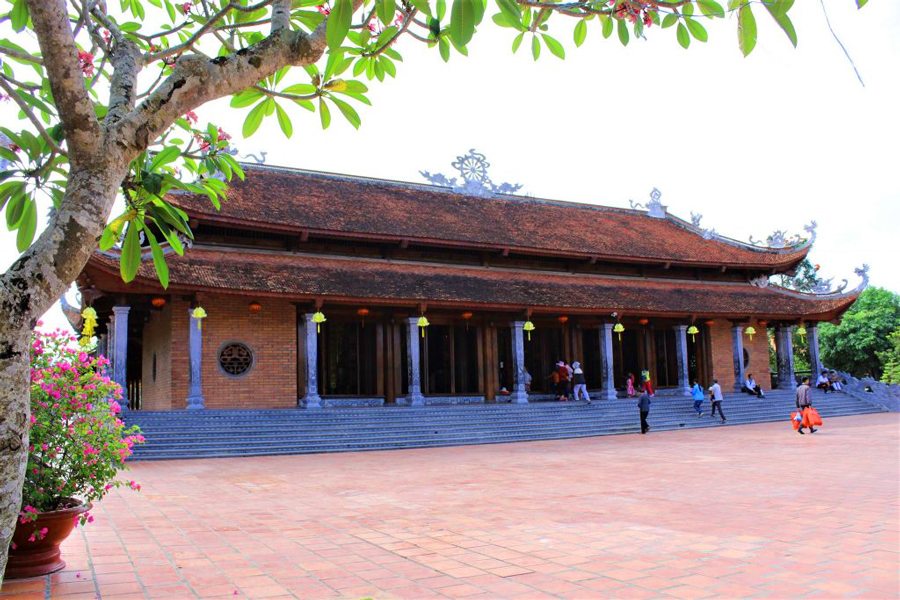
The main hall area with the large yard
From Truc Lam Phuong Nam Zen Monastery's main courtyard, a straight path leads to the grand main hall, Dai Hung Buu Dien. This Tran Dynasty-style hall with eight roofs accommodates thousands of worshippers at once. Flanked by bell and drum towers, the main hall features a majestic design with yin-yang roofs and a central wheel of dharma. Constructed with ironwood and precious woods, the hall exudes grandeur and solemnity.
The Palace House area
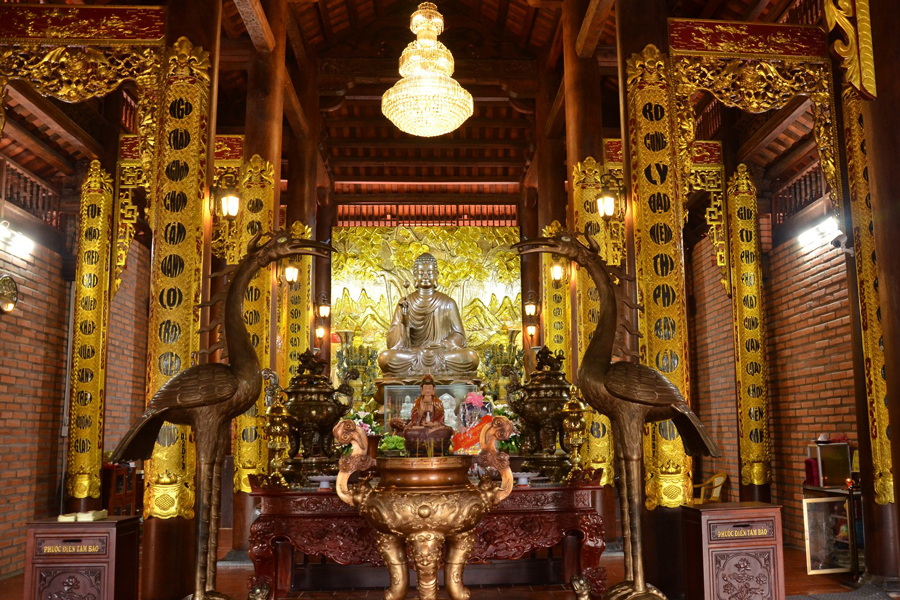
Inside the shrine room at the Zen monastery
To reach the Ancestral Hall of Truc Lam Phuong Nam Zen Monastery in Can Tho, visitors can follow the road from the main hall towards the back. In the front yard, three life-sized stone statues represent the Truc Lam sect's three Patriarchs: Phap Loa, Huyen Quang, and Tran Nhan Tong. The main hall, styled with four curved roofs resembling a boat bow from the Ly Dynasty, houses a standing statue of Patriarch Dat Ma and three patriarchs inside. Adjacent to the main hall, visitors will find a small garden featuring a meditating statue of Buddha Tran Nhan Tong.
The pavilion constructed on water
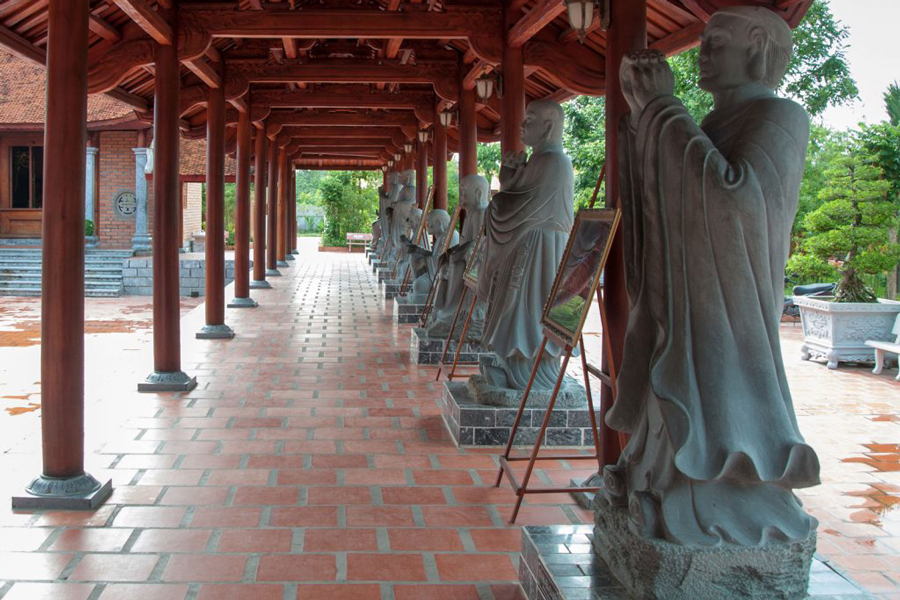
Statues of Arhats carved from marble
Truc Lam Zen Monastery in Can Tho has two water houses. The first, on a round lake with water lilies, features a wooden statue of Maitreya and a red bridge. The second, similar in architecture, houses a 2m white stone statue of Avalokiteshvara Buddha. Both offer tranquil spaces for contemplation.
Explore the architecture of the monastery
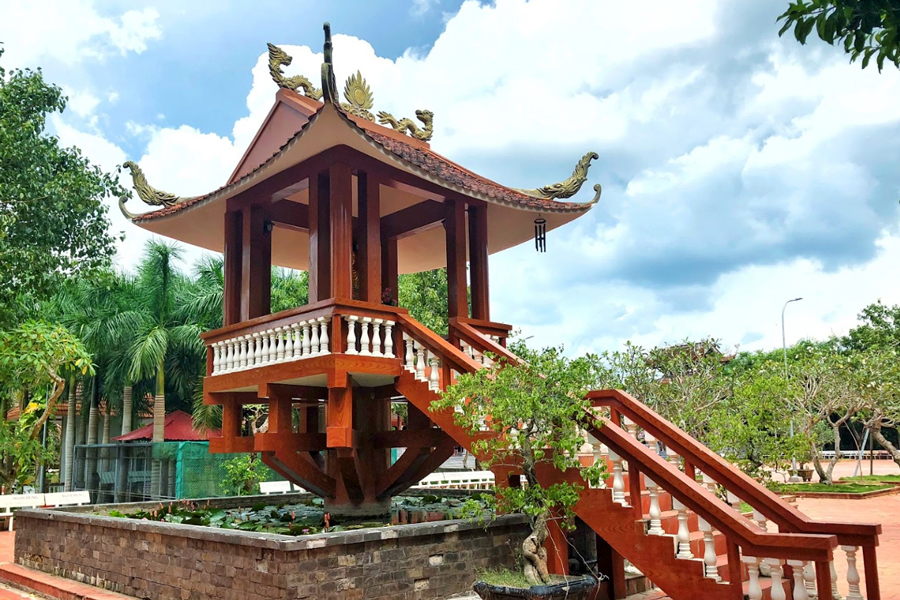
One Pillar Pagoda inside the Monastery
For spiritual and architecture enthusiasts, Truc Lam Phuong Nam Zen Monastery in Can Tho is a must-visit. It boasts a pure Vietnamese architectural style from the Ly - Tran dynasties, with a distinctive boat-shaped roof at the three-entrance gate featuring four clawed swords, red fish fin tiles, and a unique pattern of two dragons flanking the Dharma wheel.
Offer incense and pray to Buddha
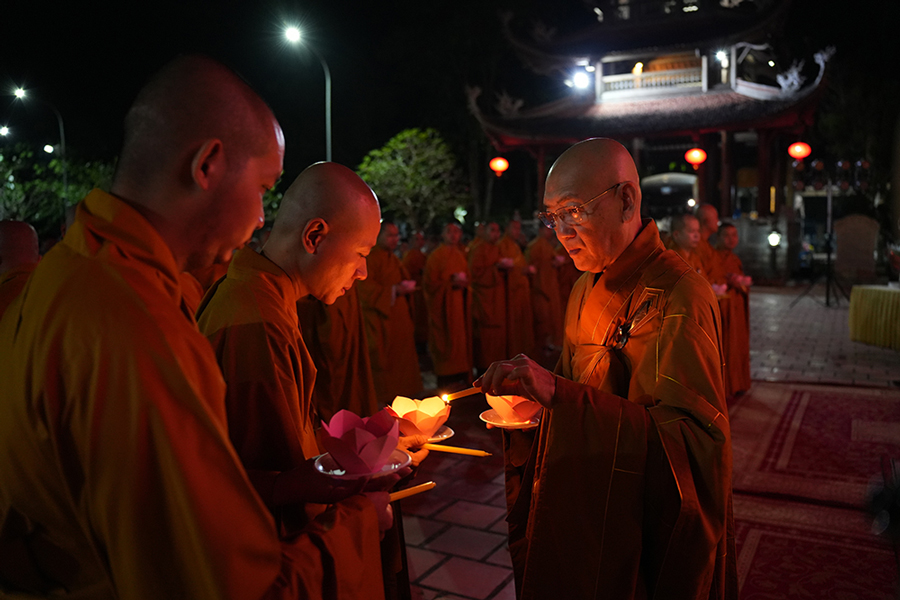
Monks and Buddhists hold an incense offering ceremony at the Zen monastery
Visitors to Truc Lam Phuong Nam Zen Monastery in Can Tho can not only enjoy the peaceful atmosphere and unique architecture but also engage in spiritual practices like offering incense, praying for peace, and seeking blessings for their families at Buddha's doorstep.
The opening time: 7:00a.m to 7:00p.m every day, convenient for tourists to visit and sightsee the temple.
Ticket price for Truc Lam Phuong Nam Zen Monastery: Visiting and sightseeing Truc Lam Phuong Nam Zen Monastery in Can Tho is free for visitors, without having to worry about buying tickets.
Phuong Nam Truc Lam Zen Monastery is located approximately 15km from Can Tho city center. Visitors can reach the monastery by motorbike, personal car, or taxi. To get there, depart from the city center and follow the route: Tran Phu Street - Cach Mang Thang 8 Street - Hung Vuong Street - Nguyen Van Cu Street. After reaching My Khanh commune, continue straight for another 10km to arrive at Phuong Nam Can Tho Monastery.